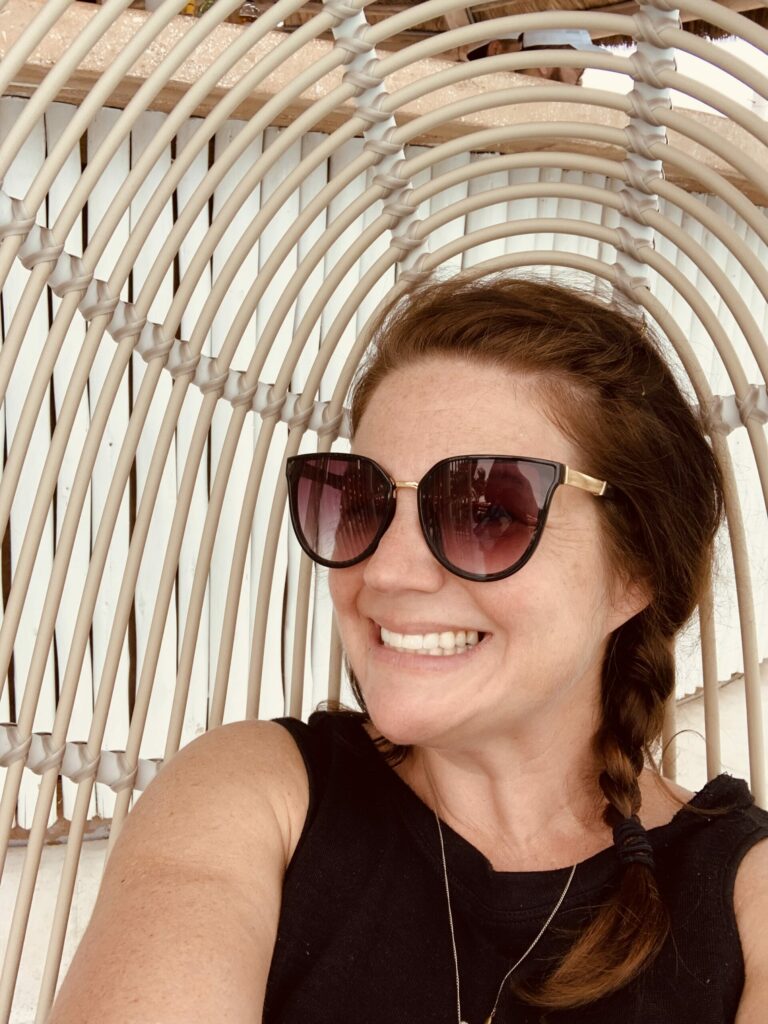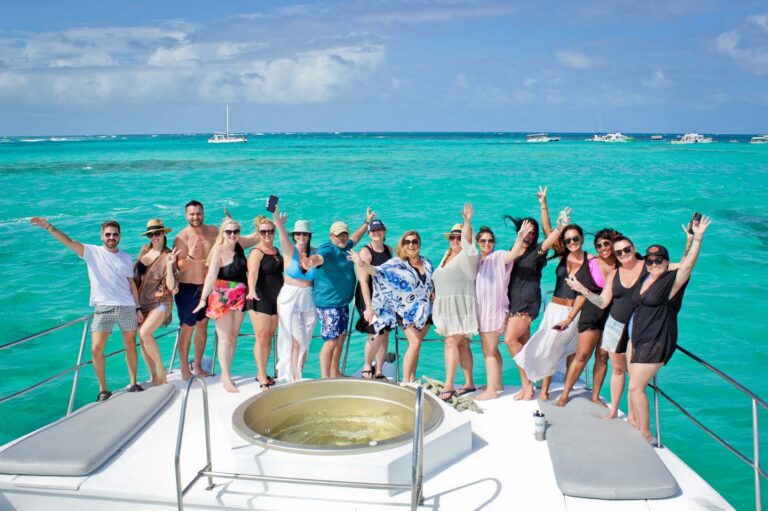
Las Vegas remains one of the most-visited destinations in the world, with gambling, shops, nightclubs, dayclubs, dining, shows and fabulous outdoor opportunities all available within a short drive.
The resorts are full of lavish stage shows, big-name performers and restaurants by celebrity chefs.
Racing exotic cars, golfing, arcade games and even machine gun lessons can certainly fill a dance card for the typical three-day visitor. Add outdoor activities such as biking, hiking, rock climbing and horseback riding, and most visitors have plenty of reasons to return.
Of course, the gaming tables and slot machines create a backdrop for the Las Vegas spectacles. For many visitors, the thrill of winning and losing makes the casinos the most exciting show in town.
Must See or Do
Sights—The Las Vegas Strip; the water show in front of Bellagio and the seasonal exhibits of its horticultural conservatory; the Fremont Street Experience, St. Mark's Square and the canals within the Venetian; nightly volcano eruptions at the Mirage; the animatronic statues at the Forum Shops at Caesars Palace; the Las Vegas Springs Preserve; the 13-mi/21-km scenic loop through Red Rock Canyon; Death Valley National Park and the Valley of Fire State Park.
Museums—The Bellagio Gallery of Fine Art; Las Vegas Natural History Museum; the Atomic Testing Museum; the Boneyard tour at the Neon Museum; the Mob Museum; Zak Bagans' The Haunted Museum.
Memorable Meals—Fresh seafood and pasta at Rivea Restaurant atop the Delano Hotel, with sweeping views of the Las Vegas Strip; red meat at trendy Craftsteak; the award-winning James Beard restaurants at Wynn Las Vegas, including Costa di Mare; light lunch of Italian-inspired tapas on Lago's outdoor patio overlooking the Bellagio fountains; prime rib and crab cakes at Oscar's with views to Fremont Street; an afternoon on a Lip Smacking Foodie Tours Boozy Brunch.
Late Night—A drink and the view at Skyfall Lounge; dancing at Hakkasan; live music at House of Blues; a glass of bubbly at Mon Ami Gabi overlooking the Strip; hitting golf balls and sipping cocktails at Topgolf; riding the High Roller during the Happiest Half Hour in Vegas; bottle service at Golden Nugget's Troy Liquor Bar overlooking the Fremont Street Experience.
Walks—A short hike and bird-watching in the desert at Red Rock Canyon National Conservation Area; recreate the steps of early explorers along the three miles of walking trails at Las Vegas Springs Preserve; a walking tour along the Strip; strolling beneath the evening light show on Fremont Street.
Especially for Kids—Swimming with the sharks at the Golden Nugget; dolphins and white tigers at the Mirage; circus acts at the Circus Circus Midway Stage; the Ultimate 4-D Experience at Excalibur; Marvel Avengers S.T.A.T.I.O.N. at Treasure Island; interactive exhibits at the Discovery Children's Museum; the Shark Reef at Mandalay Bay; thrill rides at Adventuredome and the top of the 1,149-ft-/356-m-high Stratosphere.
Geography
Many visitors never venture more than a few hundred feet/meters away from the Strip, the 4-mi-/7-km-long stretch of Las Vegas Boulevard that's lined on both sides with casino-hotels. Because so much is concentrated on one street, it's easier to understand the layout of the city if you break the Strip into sections.
The South Strip begins near Harry Reid International Airport, extends north to Harmon Avenue and includes the major intersection where the Strip meets Tropicana Avenue. Center Strip runs from Harmon north to Spring Mountain Road and includes the busy Flamingo Road intersection. The North Strip goes from Spring Mountain to just north of Sahara Avenue.
The second major area of interest to visitors is downtown (sometimes referred to as Glitter Gulch), a few miles/kilometers north of the northern end of the Strip. There the casinos are smaller, older and less lavish, but the area has its own theme attraction: the Fremont Street Experience outdoor light show.
The rest of Las Vegas rambles out east and west of the Strip.
History
Although nomadic native tribes inhabited the Las Vegas area for thousands of years, the place didn't get its name until a young Spanish scout, Rafael Rivera, discovered the grassy valley with its water supply, naming it "Las Vegas," which means the meadows in Spanish.
The building of a fort by Mormon missionaries and the discovery of precious metals in the 1800s led to more interest. Just after the turn of the 20th century, Las Vegas became established as a small railroad town on the line connecting Salt Lake City and Los Angeles.
Several acts by the U.S. government spurred the city's growth. The first was the construction of Hoover Dam in the early 1930s, which brought an army of workers to the region. During World War II, a magnesium-processing plant and a U.S. Army base were established.
Before that, the Nevada state government had lent a hand by making quick divorces easy and legalizing gambling. Following the war, Bugsy Siegel was the first organized-crime figure to imagine Las Vegas as a major gambling center, a vision that soon came true—though Bugsy didn't live to see it happen.
In the 1960s, millionaire Howard Hughes bought a big piece of the Vegas action when he moved into the Desert Inn in 1966. When the hotel management asked him to leave the following year, he bought the hotel.
Soon corporations, rather than underworld figures, were operating the casinos, turning them from gambling halls to legitimate "gaming" businesses. Entertainment flourished as Elvis Presley performed his first Vegas show in 1969 at the International Hotel (now the Westgate Las Vegas).
Through it all, the city grew. The population made significant leaps in the 1980s as businesses discovered the state's tax advantages, and the boom continued through the 1990s. In 1995, the Fremont Street Experience opened to attract visitors to the downtown area.
Las Vegas has become a major travel destination, spurred on by its increasingly colossal hotels and an expanding number of trade shows and conventions.
While major construction projects ebb and flow with the economy, there is a lot happening in Sin City. The year 2016 saw the arrival of the highly anticipated 20,000 seat T-mobile Arena fronted by the Strip's first park. The park links the NYNY hotel and the Park MGM (formerly the Monte Carlo) and showcases giant metallic shade trees, the 40-foot tall "Bliss Dance" sculpture and fountains.
The US$8.5 billion CityCenter complex includes three hotels, two residential towers, a high-end shopping complex, and a slew of restaurants and bars. The Aria resort and casino is the centerpiece and crown jewel of the complex, and the 3,000-room Resorts World Las Vegas, located where the Stardust once stood, is gaining accolades.
The bottleneck where Interstate 15 and Highway 95 meet near the Strip, known as the Spaghetti Bowl, has completed an expansion known as Project Neon, which has eased traffic congestion.
Potpourri
The Las Vegas area, situated in one of the hottest and driest locales in the U.S., has more than 40 major golf courses.
Resorts estimate they need five employees to service every room, including housekeeping, entertainment, management and auxiliary functions. The number of employees who work the graveyard shift (generally midnight-8 am) in Las Vegas is the largest per capita in the U.S.
Las Vegas welcomes more than 40 million visitors a year.
The average annual number of sunny days in Las Vegas is 320.
The average visitor to Las Vegas gambles US$619.
Las Vegas hosts more than 20,000 conventions a year.
Nevada, the Silver State, is the seventh largest in the U.S.
In a land area of 135 sq mi/352 sq km, Las Vegas has more than 500 churches, mosques, temples and synagogues.
The Nevada Test Site, roughly 65 mi/104 km from the Las Vegas city center, conducted a total of 928 tests of atomic bombs, more than 100 above ground.
Vegas has an estimated 15,000 mi/24,140 km of neon and LED lighting.
Every year, more than 120,000 couples get married in Las Vegas. Among the famous names have been Elvis and Priscilla Presley, Frank Sinatra and Mia Farrow, Bruce Willis and Demi Moore, Michael Jordan, and Joan Collins. Mickey Rooney was married eight times in Las Vegas.
The only nationally designated Nighttime Scenic American Byway, the Las Vegas Strip is fascinating. Giant LED screens have replaced neon lights, but the Strip still may have more lights per mile/kilometer than any other destination on earth. Still, visitors can get a sense of old Vegas along Fremont Street and in the downtown area, where neon lights continue to blaze.
Las Vegas started as a farming and ranching settlement in the 1840s after a dozen or so families petitioned Mexico for a land grant. It was up and running when Gen. Stephen Kearny declared New Mexico part of the U.S.—the announcement was made from a balcony in Las Vegas' Old Town. It became a raucous, brawling trading post on the Santa Fe Trail in the 1880s.
The town boasts splendid Victorian architecture, especially in the historic district of Old Town Plaza and along Sixth, Seventh and Eighth streets in New Town. Take a long day to visit several of the 830 structures on the National Register of Historic Places. Be sure to see the restored Montezuma Hotel, now the Armand Hammer United World College of the American West. The hotel was built near a hot spring that is open to the public. In winter, visitors and locals enjoy ice skating at Montezuma Pond. Stop by the Rough Rider Museum, so named because many Las Vegans served in Cuba alongside Teddy Roosevelt in the Spanish American War.
Fort Union National Monument, 30 mi/48 km northeast, was once the biggest fort in the Southwest but is now in ruin. The ghost town of Watrous is nearby. Outdoor enthusiasts may want to investigate the Las Vegas National Wildlife Refuge, a prairie preserve that attracts hundreds of bird species, especially such raptors as eagles, hawks and kestrels. Or they can head up Gallinas Canyon for a daylong hike to Hermit's Peak, which was home to a Roman Catholic mystic in the 1800s. There are also several state parks in the area that are located on scenic lakes. Las Vegas is 85 mi/135 km northeast of Albuquerque.















































